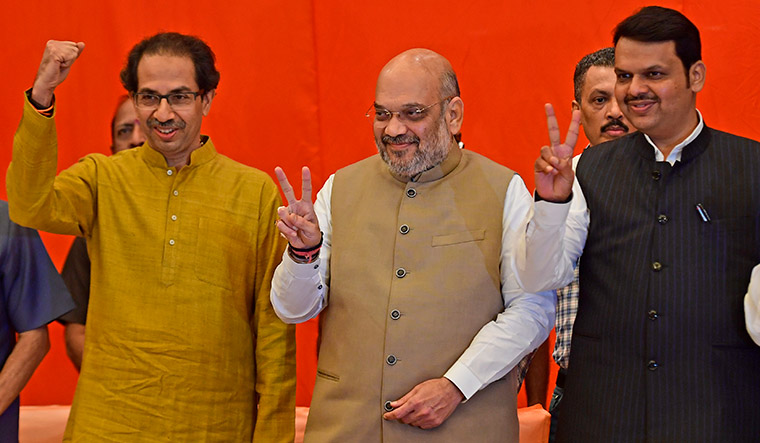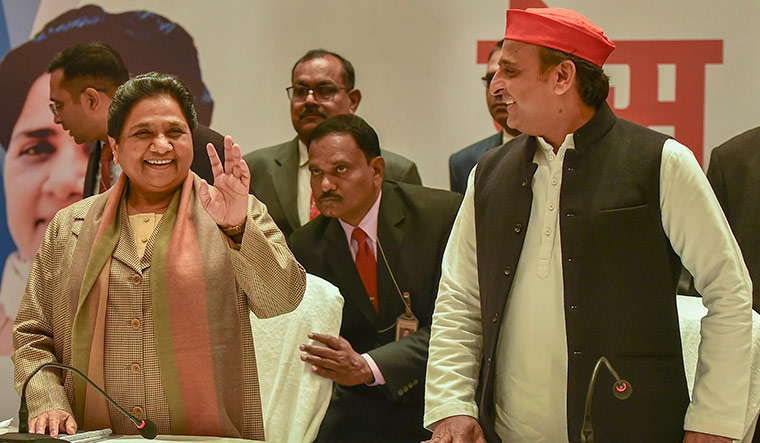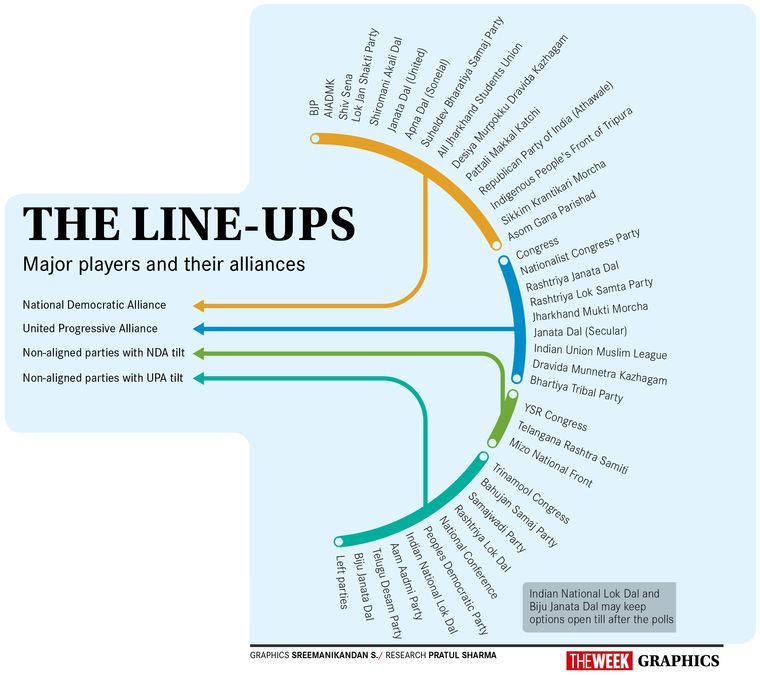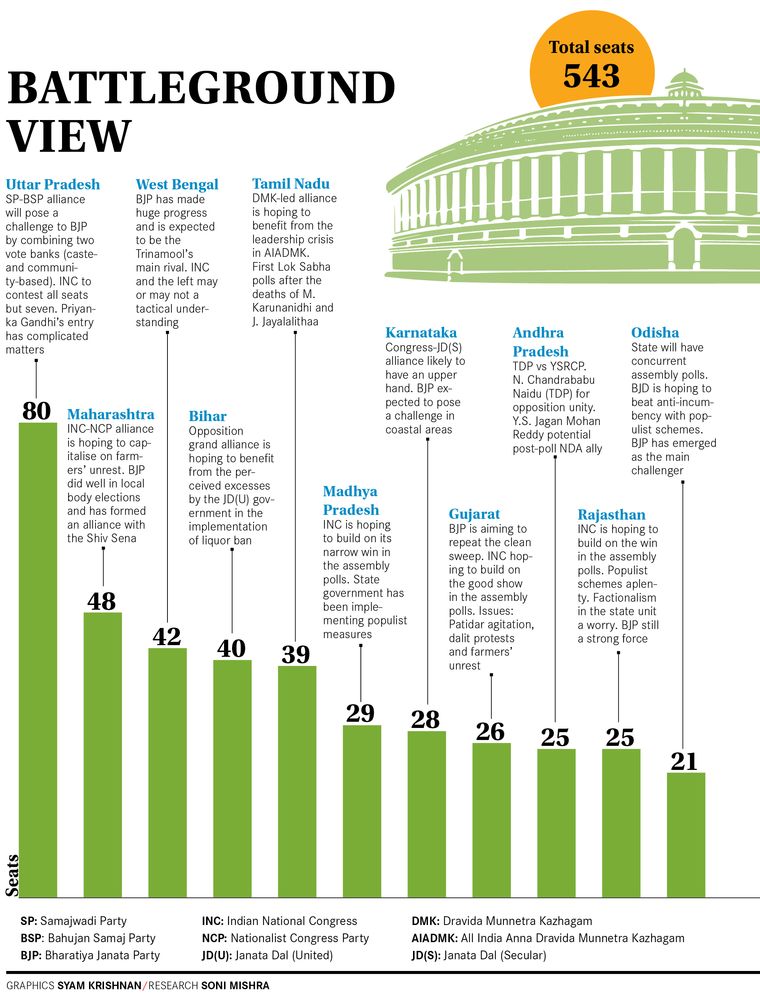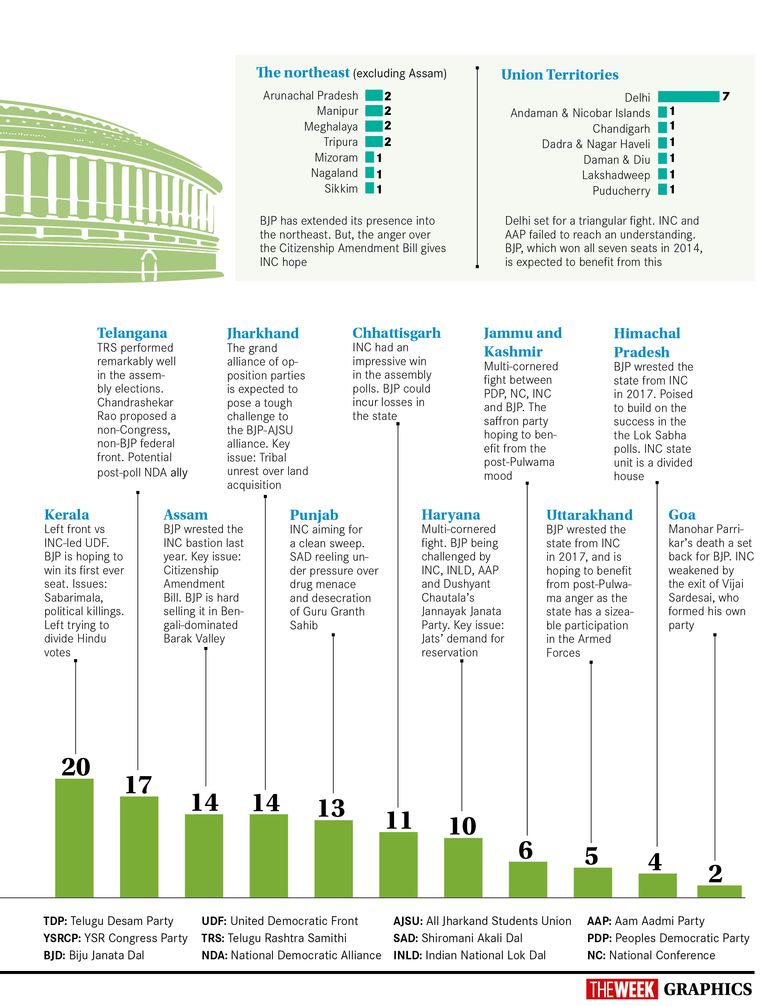Nearly a month ago, the Modi government debuted a new tag line—namumkin ab mumkin hai (the impossible is now possible). It was meant to send out a positive message of the work the government had done in the past five years. But the BJP felt it needed a stronger slogan that could catch the electorate’s attention and add zing to its campaign.
And so, within days of his return from the US after undergoing treatment for soft-tissue cancer, Finance Minister Arun Jaitley chaired a meeting of the BJP’s campaign committee. The panel brainstormed and came up with another tag line—Modi hai toh mumkin hai (with Modi, it is possible). It was punchier, and more importantly, centred on Modi, the BJP’s face for the elections.
The slogan came in handy as Indian Air Force jets pounded a suspected terrorist camp in Balakot, Pakistan, on February 26. Within hours of the attack, hoardings with the catchphrase and Modi’s picture sprung up in several states. “This slogan proved to be apt,” said a member of the campaign committee. “It was coined to send a strong message to the people as they react differently to Modi and see him as a powerful leader.”
And who better to hype the slogan than Modi himself?
Addressing election rallies in Rajasthan, Uttar Pradesh and Gujarat, he used it to tell the people about how Pakistan had been taught a lesson with the air strikes. He then talked about the work done during his tenure. These two themes—muscular nationalism and welfarism—are set to form the basis of the BJP’s poll campaign.
The opposition, on the other hand, would want to stress on Modi’s tenure as a period of betrayal and unkept promises. This was clearly spelt out in the resolution adopted by the Congress Working Committee, which held its latest meeting in Gujarat—Modi’s backyard. The Congress, in the resolution, criticised Modi for his “unkept” promises on job creation and on solving the farm crisis.
The party attacked Modi for his “reckless decision” of demonetisation and “hasty implementation of a flawed GST”, which it said disrupted the economy and destroyed millions of jobs. The Congress also made it clear that it would take up the issue of national security, which it said Modi was “cynically exploiting”. Additionally, it has blamed the BJP government of compromising the autonomy of constitutional institutions. The party feels that nationalism will not outweigh bread and butter issues.
“Certainly, the Congress will expose the failures of this government and put forward its ideas regarding a new India through its rallies and other platforms,” said K.C. Venugopal, Congress general secretary in charge of organisation. “The party will highlight the vision and the mission of the party through vigorous campaigning and public meetings of Congress president Rahul Gandhi and other leaders. The time for change is here.”
If 2014 was Modi’s election, he is now the defender who has to answer for his “unkept” promises. He is under attack for alleged corruption and crony capitalism in the Rafale deal, which threatens to tarnish his image as an anti-corruption crusader.
The stage is set for a riveting contest, with Modi expected to go all out to win a second term, while the opposition aims to end his reign.
The alarm bells had rung when the BJP lost Rajasthan, Madhya Pradesh and Chhattisgarh in the recent assembly elections. This showed that the Congress was on an upswing and that the BJP’s tally in the three states, where it had dominated in the last Lok Sabha elections, could come down significantly. Moreover, farm crisis and unemployment could hurt the BJP come April.
Knowing this, the Modi government has taken some steps to counter the negative sentiment. In the Union budget, there was a provision for an income support scheme for farmers. The 10 per cent quota for economically weaker sections is being seen as a way to deal with the anger stemming from unemployment. Also, the party is likely to make some big-ticket announcements in the election manifesto to woo the voters, many of them first-timers, and more than 22 crore beneficiaries of government schemes, whom the BJP is banking on.
The opposition camp, especially the Congress, has proposed farm loan waivers, unemployment allowance, reservation for women in legislatures and government jobs and, most importantly, a minimum income guarantee scheme, to appeal to the voters.
A major cause for worry for the BJP is not Modi’s own stock as a leader, but a lack of faith in the individual MPs. As elections in the past four years have revealed, wherever the BJP was in power, the opposition grew stronger, as reflected in the defeats in the Lok Sabha byelections and the assembly polls. Given that, party sources said that many of the sitting MPs could face the axe.
The party is likely to dial up hindutva, mixed with aggressive nationalism, to try and make a comeback in the Hindi heartland.
If one part of the electoral battle is gaining control of the political discourse, the other and perhaps more difficult part is fighting the election on the ground. While Modi is faced with a buoyant Congress in the rest of the Hindi heartland, in Uttar Pradesh and Bihar—where the BJP had done tremendously well in the 2014 elections—the party is up against formidable opposition alliances. In Uttar Pradesh, sworn enemies Samajwadi Party and Bahujan Samaj Party have stitched together an arithmetically powerful alliance, which brings together their respective vote banks of Yadavs and Muslims, and dalits. Currently, the Congress is not a part of the alliance, but it has moved aggressively to place Priyanka Gandhi Vadra as the in-charge of eastern Uttar Pradesh. The move appears to be aimed at pinning down Modi to his constituency of Varanasi, as also to have an unannounced alliance with the SP-BSP team.
In Bihar, where the BJP has an alliance with Nitish Kumar’s Janata Dal (United) and Ram Vilas Paswan’s Lok Janshakti Party, there is a Mahagathbandhan consisting of the Rashtriya Janata Dal, the Congress, the Rashtriya Lok Samata Party, the Hindustani Awam Morcha and others. This tie-up could stop the BJP from repeating its 2014 performance, when it had won 22 of the 40 seats in Bihar.
In Jammu and Kashmir, the talks between the Congress and the National Conference have hit a rough patch, with neither party willing to part with the three seats in the valley. The Congress specifically wants Anantnag.
Down south, in Tamil Nadu, a DMK-led opposition grouping, which includes the Congress, expects to make big gains. The AIADMK has allied with the BJP, but has a leadership crisis after J. Jayalalithaa’s death. The party is also dealing with allegations of corruption.
In Karnataka, the Congress’s alliance with the Janata Dal (Secular) seems to have an upper hand, but the BJP, which put up a good fight in the 2018 state elections, can do so again.
In Maharashtra, the BJP-Shiv Sena alliance is pitted against the Congress-Nationalist Congress Party combine, the latter hoping to benefit from the farmers’ anger at the government. The state has seen many farmer protests in the past few years.
In Gujarat, the home turf of Modi and BJP president Amit Shah, the party had won all 26 seats in 2014. But it got a scare in the 2017 assembly elections, when an aggressive Congress put together an alliance of disgruntled forces, including Patels, Thakors and dalits.
Keeping this in mind, the BJP has tried to gain the first-mover advantage in forming alliances, even going the extra mile and giving more space to regional allies to keep peace, as has happened in Bihar, Maharashtra and even Jharkhand, with the All Jharkhand Students Union. And the party hopes to make gains in the opposition-ruled states of West Bengal, Odisha, Andhra Pradesh, and even the northeast to compensate for losses elsewhere.
However, Congress spokesperson Randeep Singh Surjewala insists that his party has the advantage regarding alliances. “If you have a look carefully, you will find that actually, the BJP has lost multiple alliance partners, and it is the UPA (United Progressive Alliance) that has gained.... In Bihar, an alliance is in place. As far as Uttar Pradesh is concerned, we were not in an alliance earlier also. And we respect the leadership of both the SP and the BSP.”
At the national level, the Congress would want to project party president Rahul Gandhi as the lead challenger of Modi. The assembly election victories were also projected as a validation of Rahul’s leadership and a success of his campaign against Modi’s policies.
However, there are important regional players who are not willing to accept the Congress as the leader, and want to position themselves independently, such as Mayawati in Uttar Pradesh. There are also frenemies such as Trinamool Congress president Mamata Banerjee and Telugu Desam Party president N. Chandrababu Naidu, who will fight the Congress in their states, but could appear in the same frame with it at the national level.
Interestingly, the talks between the Communist Party of India (Marxist) and the Congress in West Bengal have hit a roadblock, with indications that the tie-up might not happen. The Congress state unit is not ready to part with Raiganj and Murshidabad, and is miffed that the left came out with its list of candidates without consulting it.
The BJP, meanwhile, is looking at unaligned forces such as K. Chandrashekar Rao’s Telangana Rashtra Samithi, Naveen Patnaik’s Biju Janata Dal and Jagan Mohan Reddy’s YSR Congress as potential allies in the post-election scenario, in case its alliance falls short of the required numbers.
The fault lines in the opposition camp has prompted the BJP to emphasise on Modi’s credentials as a strong and decisive leader. The anti-Modi camp, insists the BJP, is a ragtag arrangement of opportunistic forces that cannot provide a steady government. “The contest is between a leader in whose hands the country is developing and secure,” said Jaitley. “Against him, there is no one projected leader. There are multiple leaders, each trying to outwit the other. They can only promise a temporary government if we go by the past precedents. One can be certain of chaos.”
The battle lines are drawn, and narratives and counter-narratives will swirl around in the coming days. But, in the end, the voter will have the last word, which will be heard loud and clear on May 23.



